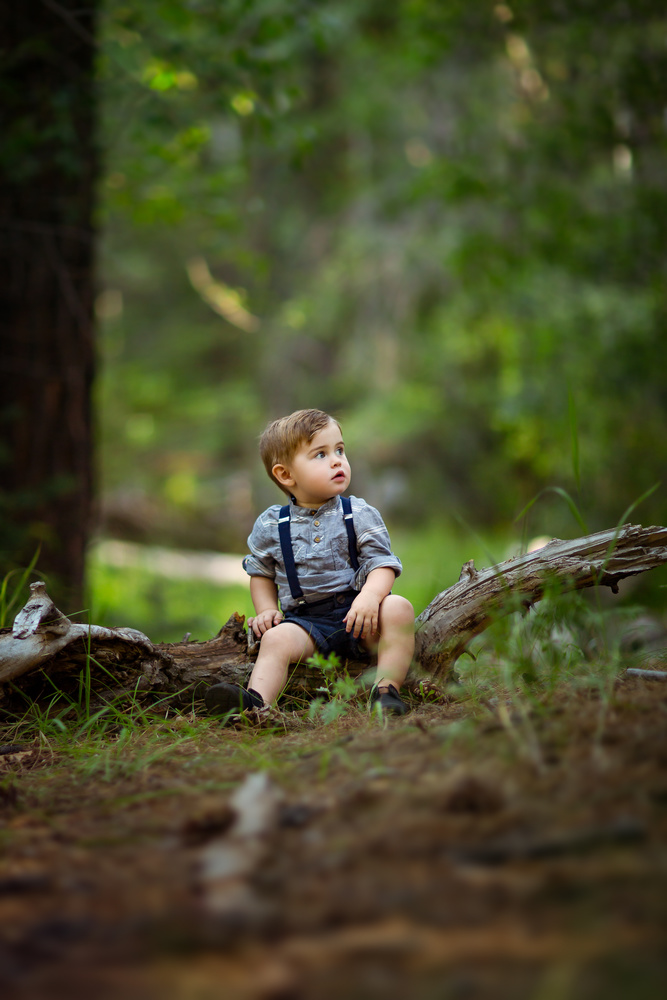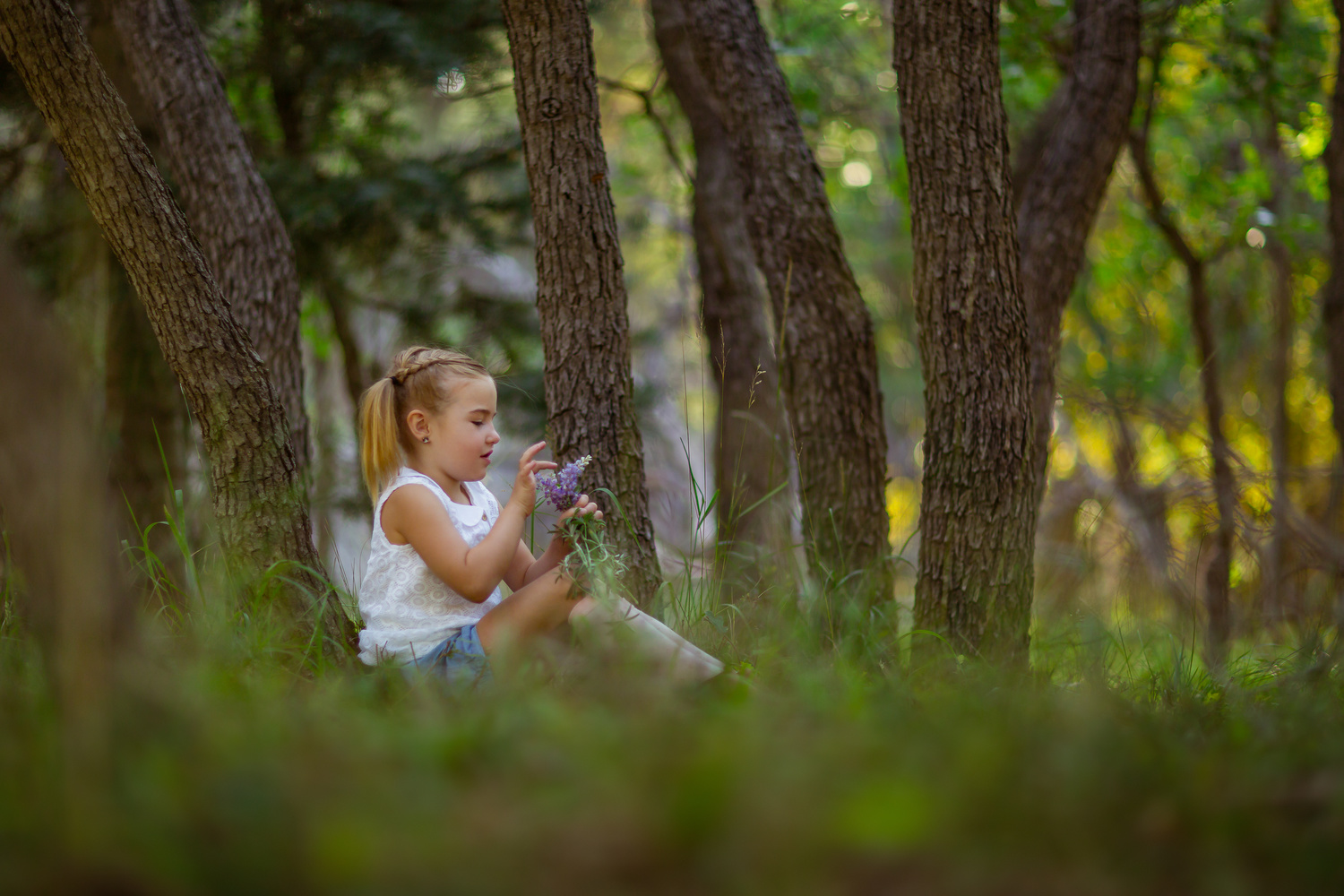As a photographer, working with children can be incredibly challenging at times, but it can also be just as much fun. I have found that there is no real secret behind taking great shots of kids, but rather it comes down to how you navigate interacting with each child while on the shoot. The range of personalities that kids will display is incredibly diverse, this means that it is unlikely that you will be able to interact with any given child the same way that you did with another. This also means that it will be really easy to capture very unique shots on every single shoot.
On a more recent basis, I have switched the vast majority of my shoots to be ones that center around photography just for kids. Sure, I still work with the grown up people, but not nearly as often as I have in the past. I didn't really have much experience working with kids, so when I started booking shoots I basically just jumped in headfirst and went for it. I had ideas in my head of shots that I wanted to try and capture, but I found that I really had to learn how to be adaptable on these shoots. Sometimes we ended up with completely different shots than the ones that I had pre-visualized. These shoots have been, and continue to be, some of the best learning experiences in my career.

Canon 5D Mark III | Canon EF 85mm f/1.2L II USM | 85mm • ƒ/1.2 • 1/2500s • ISO 800

Canon 5D Mark III | Canon EF 85mm f/1.2L II USM | 85mm • ƒ/1.2 • 1/1600s • ISO 400
At least in my experience so far, I have found that the imagination and personality of each child I work with is really the key to the shoot itself. Without question, what tends to be the most challenging thing when working with children is the fact that you never really know what mood they will be in or if they are even remotely willing to have their picture taken. Some children never really want to be very far from a parent, so it can be tough to get that shot of them by themselves. Other kids simply have no interest in sitting or standing still. There are also times when they are eager to have their picture taken and they are more than happy to sit and pose for you.
The trick is to work with what you get. Don't get so caught up in worrying about capturing the perfect pose, the perfect expression, or even having them in perfect focus. You don't have much time, so don't waste it trying to do something in which the child has no interest. I have learned that my first 30 minutes on the shoot is usually the most important. Within those first 30 minutes you can get a good feel for what the child is like and how to best create a connection with them so as to set up the rest of the shoot for success. Those first moments are when that child will be able to get to figure out what kind of person you are, that first impression is your make it or break it moment. Spend some time to help everyone involved with the shoot understand that you're there to have fun and that you're not there to force anyone to do anything they don't want to do.

Canon 5D Mark III | Canon EF 85mm f/1.2L II USM | 85mm • ƒ/1.2 • 1/5000s • ISO 400

Canon 5D Mark III | Canon EF 85mm f/1.2L II USM | 85mm • ƒ/1.2 • 1/500s • ISO 400
There is no real formula for connecting well with any child, but here are a few things to keep in mind when navigating your shoots:
- Be fun. Make sure to smile and smile a lot. Children are very impressionable and you want to be the fun photographer, not the scary or boring photographer.
- Play on their level. Literally, get down on your knees and work from their level. You spend less time being the big, tall, intimidating adult with a camera when you're moving around on their level.
- Don't get hung up on one type of shot. You may try something that just doesn't interest the child, and that's OK. Try something else and keep trying until you figure out what does work.
- Take breaks. Allow them to have breaks too. Breaking up the monotony of picture taking to let the child just enjoy being there. Use the breaks to evaluate what is and isn't working.
- Use everybody present. Parents, assistants, etc. will become some of your most important assets on these shoots. They can help you set up your shots. They can help wrangle children. They can help you direct the attention of the children to wherever it needs to be for the shot.
- Shoot everything and use your burst mode. Some of those winning shots will be ones that you just happened to snag during those fleeting moments as the child interacts with the shoot as a whole.
- Go prepared with your camera set up in a way that lets you spend less time worrying about settings so as to spend more time engaging with the kids.

Canon 5D Mark III | Canon EF 70-200mm f/2.8L IS II USM | 150mm • ƒ/2.8 • 1/200s • ISO 1600

Canon 5D Mark III | Canon EF 85mm f/1.2L II USM | 85mm • ƒ/1.2 • 1/2000s • ISO 800
Though this may appear obvious to some, it was still a lesson that I learned more and more with each shoot, it is incredibly important to involve the parents/guardians with the shoot. Nobody knows that child quite like their parents, nobody will be able to help you create a comfortable atmosphere quite like the parents, and when it comes to taking cute pictures of somebody's child nobody is likely to be more excited to see you succeed than the parents. They want you to get that winning shot as much as you do. At this point in time I have lost track how many times I have hidden a parent either within the frame or just off camera to help create an eye line for the child or to help initiate a fun reaction from the child.
Some kids don't ever want to be more than a couple feet away from their parents. Don't let that inhibit your creativity, let it push you to figure out how to make it work. Even if the shoot is solely for the child, there are plenty of occasions (especially towards the beginning) where I'll even have the child sit with the parent while I take pictures of them. Helping the kids feel comfortable on the shoot is always the first priority, figuring out the rest of the shots comes after that. To this day, I have always been able to get the shots desired, and sometimes that happens in the last 15 minutes of the shoot. I may spend the first major portion of the shoot simply working with the parents and the child to just put everyone at ease and we snag all the shots in that small window of time once the child is ready.

Canon 5D Mark III | Canon EF 85mm f/1.2L II USM | 85mm • ƒ/1.2 • 1/1600s • ISO 400

Canon 5D Mark III | Canon EF 85mm f/1.2L II USM | 85mm • ƒ/1.2 • 1/1000s • ISO 400
At the end of the day, as long as you get a small handful of successful shots then I think you should be proud of the shoot. The ability to be adaptable is one of the best skills to hone when working with children. Expect the unexpected and work with what you find. Rely on the parents who are on location with you as they are your best allies and will know how to help you navigate setting up the shoot for their children. Parents may know know what you need as far as the technical aspects of the shoot, but they tend to know what makes their kids smile and what makes them happy. Of all the places to get pushed out of your comfort zone, this would be one that will always have an amazing payoff. Besides, let's face it, who doesn't like cute pictures of cute kids? Even if the shot isn't perfect, people will love it anyway, so have fun with it.
I can honestly say that the most fun that I've ever had on a shoot of mine is definitely the shoots where I get to work with kids. Every single shot that comes out of those shoots was one that we earned and was usually a lot of fun to obtain. If you don't know whether it works or not, try it, the worst that can happen is that the shot is terrible and you have to try something else. When in doubt, try it out. For those of you fantastic readers who have experience working with children, make sure to comment below if you have any other tips or advice, I'd love to hear it.







These are terrific images. Thank you for sharing.
awesome pictures.
Love these shots! Is there any kind of trick to keeping a squirmy child in focus when shooting this wide?
It's always a tricky thing to navigate, sometimes it's easier than others, but it's always work. I have found that there are a couple things that help make your job easier.
1) Use a single focal point autofocus setup, that way your camera isn't wasting time trying to figure out what to focus on. Place that focus point exactly where you want your subject's head to be. For me, I place it in the center of one third or the other. That way your composition is mostly set up each time you have to readjust focus.
2) Utilize the parents. This is a big one, for me anyway. In every single one of those shots that I shared, there was a parent either hiding somewhere within the frame or just barely off camera. I help them understand my work space so they can help me better manage the children.
3) Mitigate too much space. If the child is one that moves a lot, finding a space to create a composition that eliminates much room for them to wander is a tactic I use all the time. Shooting on a narrow hiking trail, next to a body of water, etc. are ways to remove places for them to go which keeps them in frame that much longer.
4) This won't work for every situation, but give the child something to do. Give them a reason to stay. I tend to play lots of 'I Spy" games. Have them count clouds, find a tree with specific leaves, try and find a bird, and so on. Giving them a reason to focus their attention on something else, even if just for a few seconds, tends to give me enough time to capture some fun shots.